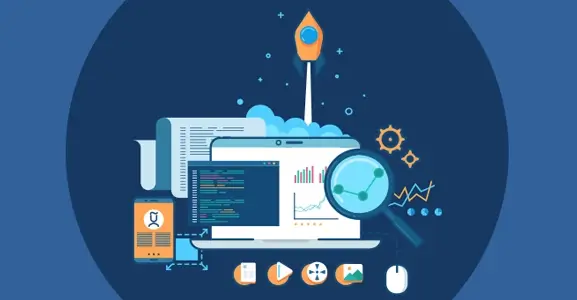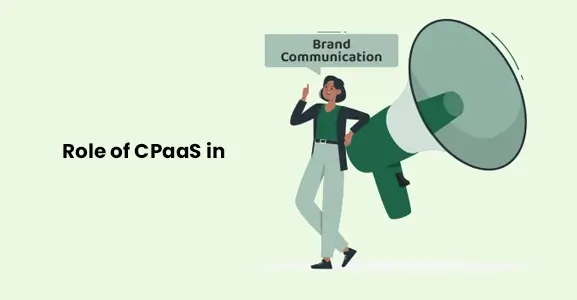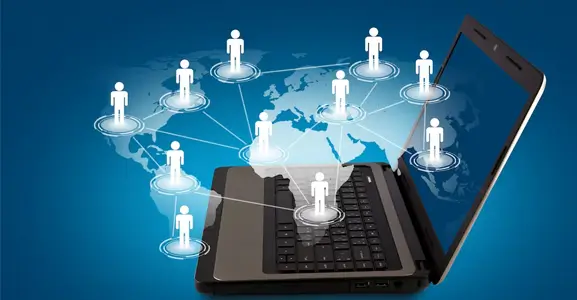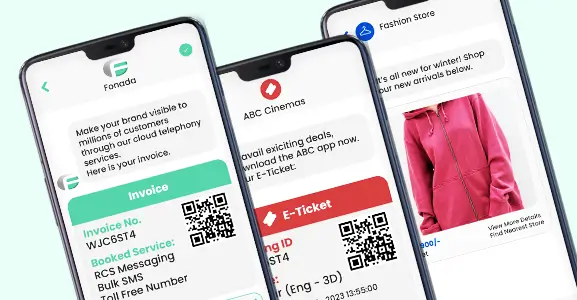People now constantly communicate online via chat, social networking sites, email, video conferencing, and other means. Businesses need to give digital touchpoints that are suitable, intuitive, and simple for excellent customer experiences.
Digitally savvy customers want immediate resolution and assistance. CPaaS business model is a reliable solution to deliver unified communications as a service operations. CPaaS has become common as more and more businesses are going digital while embracing cloud-based technology.
CPaaS technology improves customer experiences, marketing, sales strategy performance, and integration with enterprise back-end systems and workflows while decreasing telecom and development costs.
What’s The Concept Of “CPaaS”?
CPaaS business model, or Communication Platform as a Service, is a cloud based system that aids programmers in adding real-time channels for communication to their applications. Tools, APIs, sample code, and even fully functional apps are all part of the comprehensive development platform it provides. APIs enable the seamless integration of phone calls, messaging, video, and other services into a single software.
Using application programming interfaces (APIs), CPaaS for enterprises enable them to combine the security and scalability of established communication services with their unique customer applications. The providers of these platforms also offer assistance and product guides to aid programmers as they work. Here, it is possible to embed messaging, voice, and video capabilities into customer-facing applications.
CPaaS business model simplifies, accelerates, and lowers the cost of improving customer experiences by modifying how enterprises and customers communicate.
CPaaS Architecture
The Telephony and Web/App technology worlds greatly benefited from top CPaaS companies. On the one hand, users can engage with web/mobile applications and imitate voice, texting, and other functionalities. The platform can interact with carrier networks and enterprise apps for voice, SMS/MMS, and RCS.
Finding a suitable CPaaS architecture usually resulted in using cloud contact center technology, requiring some planning and communication with public cloud service providers.
Therefore, in a multi-cloud scenario, it is crucial to integrate appropriate security aspects such as encryption, TLS, authorisation, etc.
Developers and businesses can use CPaaS platforms to add communication features to their core applications. These services increase the value and profitability of any CPaaS platform, accelerating its adoption. Services must adhere to the microservices architecture principles.
Why Your Enterprise Needs CPaaS Business Model?
1. Cost Savings:
You can now take advantage of significant cost reductions and use your company’s resources for other operations. With the CPaaS business model, you can use a single API to give your business a new level of flexibility by adding channels as appropriate and without much development work or investment. You can substantially reduce the number of distinct systems required and save money on the setup, maintenance, and upgrade of multiple pieces of hardware.
2. Easily Incorporated:
In this rapidly evolving technology, consumers anticipate businesses to be accessible at all times and ready to accommodate their preferences. With CPaaS architecture, adding chat functionality to your app is much easier and more practical, which lets you connect directly with users. Your developers can quickly connect their infrastructure with the cloud-based system and promptly deploy their CPaaS for enterprise-grade solutions to add a new communication channel.
3. Simple Analysis:
With the help of APIs that automatically scale, the CPaaS business model helps you take your business data to the next level and give the best customer experience. It also has a user-friendly dashboard to see your data in real time. You can quickly see real-time data, analyze the report simultaneously, and make smart decisions based on the data, which will help your business grow to meet market needs.
4. Enhances Global Impact:
Since CPaaS is a cloud based communication platform, your business will have instant access to hundreds of carriers worldwide. CPaaS lets you speak to consumers in their native language and customize your approach. In a nutshell, CPaaS eliminates barriers and enables large enterprises to deliver customized services.
5. Improves The Customer Experience:
Customers today expect more from businesses in terms of ‘experience’ than ever before. CPaaS for enterprises enables you to meet their expectation so that they can easily engage with enterprises via their preferred contact channel.
The Role Of CPaaS In Empowering Enterprises
It could hurt your business if you don’t care about providing customers with a good experience.
Enterprises know this and use technology to improve consumer communication and service. With CPaaS for enterprises, businesses can do what they want.
Enterprises are using the CPaaS business model to improve digital and customised customer experiences and boost earnings:
1. Online 24X7 Payments
CPaaS for enterprises enables businesses to offer consumers the flexibility of paying anytime via an IVR system. This may be the most important and effective instrument for digital transformation initiatives. Users can make payments quickly and easily using the customised IVR system.
2. Task Scheduling
CPaaS can help a business establish a system where clients may contact and automatically plan, change, or cancel appointments. Also, it will make sure that the system is always updated. After the call, the scheduling software updates consumer information. They automatically receive updates regarding the same topic via SMS, email, or any other channel they choose.
3. CRM-Integrated Solutions
CPaaS also means connecting apps to CRM software. Since it can quickly find important information, it speeds up client service. It means quickly resolving consumer issues.
4. Automated Messages
It is also feasible for customers to activate automatic messages that are more customized than conventional. Payment confirmations, appointment notifications, and promotional codes are all examples of what this category covers. To make the experience more engaging, businesses might incorporate customer participation and feedback.
How CPaaS Can Be Useful To Enhance Sales And Marketing Efforts
Businesses recognise the importance of marketing for customer service and for generating sales. Here are three ways the CPaaS business model can help businesses with sales and marketing.
1. Marketing Phone Surveys
With CPaaS, businesses can do surveys that are part of a long-term or short-term marketing strategy. Callers will be asked several strategic questions, and they will use their phones to type in their responses. For market data analysis, the responses are recorded in a database that can be viewed in real-time and previous date ranges.
Using IVR reporting tools, custom reports can be developed in addition to typical default reports. It also provides extensive data metrics reporting with regional and demographic info from responders to help with future promotional campaigns.
2. Do Performance Surveys For Call Center Agents
End-of-call questionnaires that enable callers to review the interactions with their call center representative can help businesses retain great customer service. The more ways customers have to give feedback, the faster businesses can react and make changes to make sure they are giving the best customer service.
In the same way, data can be sent to other software systems, like CRMs, to track how customers have responded in the past.
3. Send Out Discount Codes And Online Survey Links Through Text Messages
You can use Summit to send text messages with relevant communications to your marketing and sales initiatives. Text messages delivered from toll-free lines give a quick and easy way to reach clients and prospects with information like coupon codes, links to surveys on the web requesting feedback, and other marketing incentives.
Case Studies And Examples Of CPaaS
Businesses can now use an omnichannel strategy to communicate through top CPaaS companies. Communicating internally and providing a seamless client experience allows this. Here are several business implementation strategies for CPaaS’s primary features.
1. Enhanced Confirmations And Delivery Status Updates
CPaaS is one of the best ways to send texts like appointment confirmations, reminders, order confirmations, and information on how to track delivery.
Messages may also minimise missed appointments, enhance customer communication, and increase customer satisfaction, eliminating the need to send reminders and updates.
This will allow customer service representatives to focus on generating new business rather than responding to client inquiries.
2. Controlling For Fraud And Misuse
Your text messages should provide an extra degree of protection for your clients. Protect sensitive mobile payment data through one-time passwords (OTPs), two-factor authentication codes, and other methods.
This use case example works particularly effectively in any company where most clients have accounts with personal data and online payments. This industry uses online shopping, business software, and personal banking.
3. Privacy-Oriented Messaging
Businesses may distribute sensitive messages and interact privately with their clients, and information such as policy updates, credit card delivery services notifications, and claim reports will always be secure. This ensures a smooth operation from start to finish.
4. Voice And Messaging Scalability
CPaaS business model allows you to integrate messaging and phone calling into any application that interacts with customers. It facilitates communication throughout the purchase journey.
When it comes to deploying phone calls and messages to a greater extent, sometimes they are vital and greatly impact the overall quality of the customer experience. The travel and banking sectors benefit greatly from this.
5. Automatic Customer Interactions
By automating your customer interactions, you can put all your client interactions in one place and give your sales and customer service teams the necessary information. All sectors deal directly with repetitive consumer inquiries automated via chatbots, WhatsApp, and other messaging services.
How To Select A CPaaS Service Provider?
When selecting a top CPaaS company, you must consider the following:
- The overall selection of API
- The level of complexity of both the user base and the development community
- Infrastructure and durability of the network
- Languages available for programming
- Security measures and strategies to protect data
- Pricing scheme
What Benefits Does Business CPaaS Offer?
Enterprise Communications Platform as a Service (CPaaS) is a cloud-based platform that allows for the seamless orchestration of customer interactions across numerous digital channels with existing back-end systems to give instant outcomes for end consumers. Access to real-time communication APIs and low-code / no-code tools is provided by CPaaS, making it easy for enterprises to interact with their consumers.
There are multiple benefits for businesses that use CPaaS architecture. Seven of the most striking CPaaS benefits are listed here.
1. Impression Of The Customer
Combining CPaaS with AI tools can boost service quality and delight customers. Connect with customers in real-time across their preferred channels by adding messaging, audio, and video. Improving the customer experience gives more satisfied clients that will become repeat buyers and advocates for the company.
2. Background As An Agent
Agents can do their tasks more quickly and efficiently with access to various in-house communication and collaboration tools. In addition to improving interactions with external clients, CPaaS can facilitate better internal communications and make it easier for employees to access the required data. It boosts their productivity in the here and now and frees them up to focus on resolving more intricate customer issues in the future.
3. A Speedier Rollout
CPaaS settings, no-code tools, and other capabilities can speed up deployment timelines while decreasing reliance on IT. Instead of the weeks or months it can take to create services without CPaaS, businesses can develop client journeys in hours. No longer is it necessary to start programmes from the beginning. Developers can save time with pre-built applications, integrations, APIs, etc.; some even provide ‘no-code’ tools.
4. Saves Money
Using the CPaaS business model, you won’t have to worry about investing in or paying for any specialised hardware or infrastructure or bearing the costs of maintaining it. The flexibility of CPaaS platforms also means that business leaders can pick and choose whatever services they need and pay for only those. Some providers allow you to pay just for the services you employ. The greatest benefit should result from happier customers and service reps.
5. Robotic Conversations
End-to-end automation, automated journeys, and chatbots are examples of how CPaaS can streamline a company’s relationships with its clientele. The experience of both customers and agents can be enhanced through automated interactions. For instance, chatbots provide instantaneous responses to consumers’ typical questions and requests and can reduce the workload of customer care employees.
6. Modularity And Flexibility
The scalability of CPaaS architecture makes it easy to adapt to unexpected increases or decreases in client interactions. For example, when the holiday shopping season is busy for stores, the CPaaS infrastructure instantly grows to handle more customer interactions.
Modifications may be implemented rapidly and effortlessly. Company-specific customer contact policies and business logic can be implemented without expensive development cycles.
7. Global Outreach
Companies seeking a global presence can acquire capabilities that would otherwise be needlessly complex or expensive. Cloud computing and vendor communication networks play crucial roles in making this possible for CPaaS.
Even small firms, with the appropriate vendor, can create something that functions the same way everywhere. The top CPaaS companies service will be responsible for all account maintenance and compliance with relevant regulations.
Businesses will not be required to install and maintain expensive hardware, pay for legal counsel regarding local telecommunications laws, or sign agreements in which they choose to operate.
Conclusion
The CPaaS for enterprises assists businesses in managing customer interactions, automating customer journeys, accelerating IT roadmap, innovating with the latest modes of communication, reducing duplication, avoiding fragmentation, and delivering better customer experiences promptly. The platform supports voice, Business Chat, email, in-app messaging, SMS, MMS, and many more.
It also gives clients analytics tools, and data visuals, to help them improve the customer journey. You can use it for centralised management of client interactions, regulatory compliance, security, real-time performance monitoring, hosting flexibility, and support and service guarantees are just a few CPaaS benefits.
FAQs
Fonada, Twilio Inc., RingCentral, Brightlink, Amazon’s Connect service, and MessageBird are just a few of the top CPaaS companies operating in the Indian market.
A CPaaS provider focuses on providing APIs, various applications, and code snippets. It can introduce features and channels for real-time communication to the entire ecosystem.
The annual growth rate of the CPaaS market is 40%. Demand for cloud based communication services is driving the continuing growth of the CPaaS industry. In addition to the growing number of smartphone consumers, individuals seek to interact with businesses via numerous channels and messaging apps.
Some factors to consider when selecting a CPaaS service you can rely on:
1. The API Selection Criteria
2. Access for the Community and Developers
3. Assistance and Guidance
4. A Reliable Architecture
5. Peace of mind along with security
During the forecast period, the software component of the CPaaS market is expected to grow at a CAGR of 2%, making it the largest part of the worldwide connectivity infrastructure as a service market. Between 2022 and 2032, the market for large enterprises is projected to rise at a CAGR of about 23%.

Dec 11, 2024
Top Contact Center Optimization Tools For 2024
“A thriving business knows how to fetch maximum output from limited resources by optimizing ca... Read More
Nov 13, 2024
What Is Brand Communication? CPaaS Role Explained
Did you ever wonder why some advertisements grab your attention instantly, while others do not? The... Read More
Nov 01, 2024
What Is Automated Messaging And How Does It Work?
Automated messaging or text automation empowers businesses and marketing professionals to connect wi... Read MoreLatest Updates
From Fonada
Industry Insights, Trends, Innovations, Updates, and Case Studies from Industry Experts
View
Customer
Reviews
Discover why our customers love us - read their authentic and heartfelt reviews!
View
Case
Studies
Explore real-life scenarios, offering analysis, and solutions to practical challenges
View
Convert Leads Into Sales With Fonada
Trusted CPaaS Solution Provider








